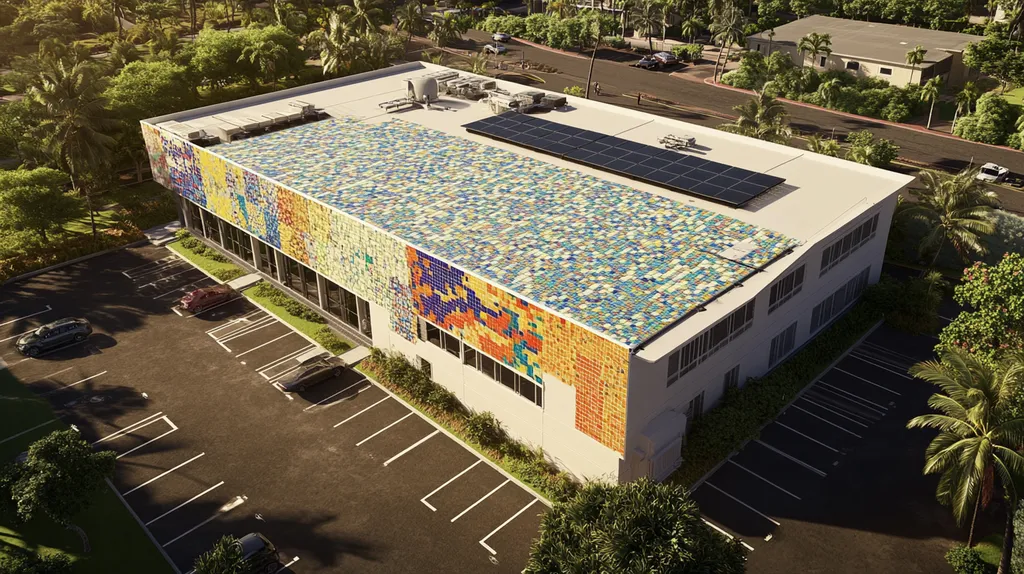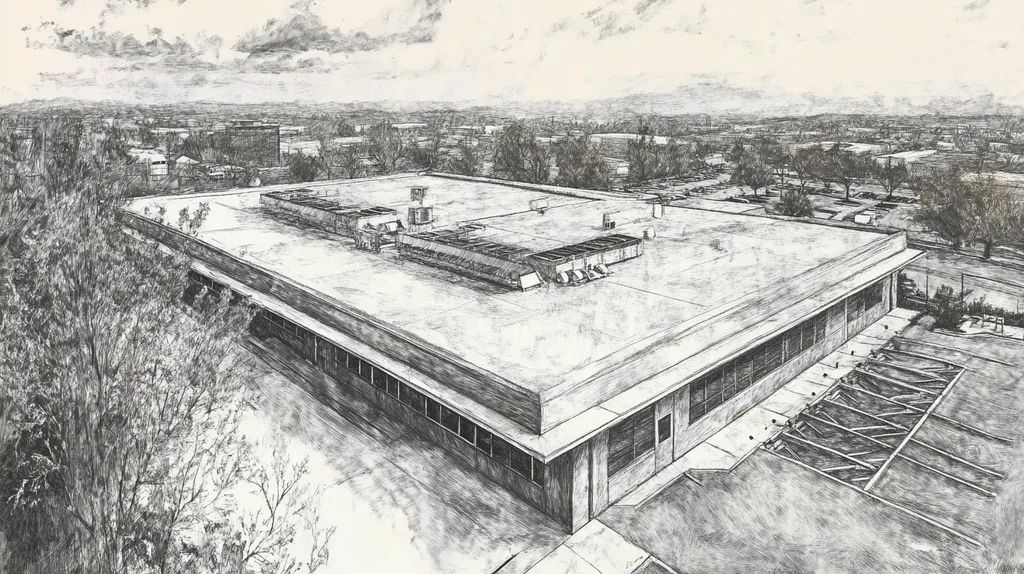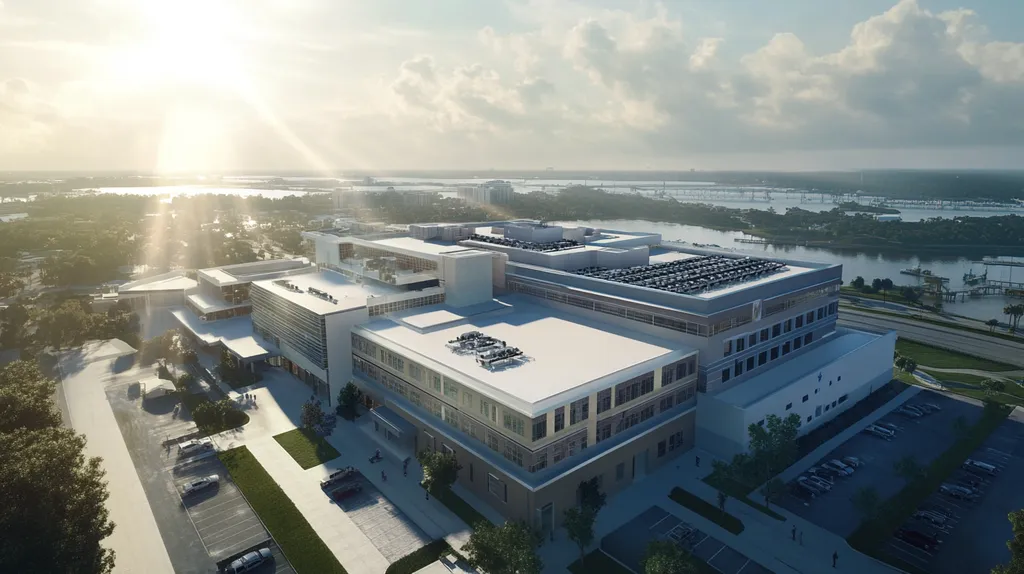Welcome to today’s Battle Royale featuring two roofing heavyweights: “TPO” in the east corner versus “PVC” in the west!
Tonight’s showdown pits these contenders against each other across six punishing rounds designed to test every aspect of their performance for Industrial Roofing Energy Efficiency.
At stake? Millions in potential costs, decades of building protection, and the critical performance demands of modern commercial and industrial facilities.
Our professional judging panel will evaluate each round on technical merit, real-world performance, and value delivery. After all six rounds, we’ll declare our ultimate champion.
Ladies and gentlemen, facility managers and building owners… it’s time to rumble!
ROUND 1: INITIAL COSTS & INSTALLATION
In today’s volatile economy, industrial facility managers face mounting pressure to balance immediate budget constraints with long-term energy efficiency goals. The choice between TPO and PVC roofing systems represents a critical decision point that can impact operational costs for decades. Understanding the initial investment and installation requirements of each system is essential for making an informed decision that aligns with both financial and sustainability objectives.
Material Expenses
Material costs form the foundation of any roofing project’s budget. TPO membranes typically cost 20-30% less than their PVC counterparts, with prices ranging from $3.50 to $5.50 per square foot for standard thickness materials.
PVC roofing materials command premium pricing, usually between $4.50 and $7.00 per square foot, reflecting their advanced chemical formulation and enhanced durability characteristics.
While both materials deliver excellent energy efficiency through their reflective surfaces, TPO’s lower acquisition cost provides an immediate financial benefit for budget-conscious facility managers.
In the material cost category, TPO claims an ADVANTAGE due to its significantly lower price point without sacrificing core performance capabilities.
Installation Complexity
Installation efficiency directly impacts both labor costs and facility disruption. TPO’s lighter weight and flexible composition make it easier to handle and position, reducing the physical demands on installation crews.
TPO membranes also feature wider sheets, which means fewer seams to weld and less opportunity for installation errors. The material’s forgiving nature allows for successful installation across a broader range of temperature conditions.
PVC installation requires more precise temperature control during welding and demands specialized expertise to ensure proper seam fusion. The material’s rigidity can also make it more challenging to work with, especially around roof penetrations and irregular shapes.
TPO earns an ADVANTAGE in installation complexity due to its worker-friendly characteristics and more straightforward application process.
Project Timeline
Time efficiency in roofing projects directly affects both labor costs and business disruption. TPO installations typically progress 15-20% faster than comparable PVC projects due to their simpler handling requirements and fewer seam welds.
The wider TPO sheets mean crews can cover more roof area per hour, while the material’s flexibility allows for quicker work around obstacles and penetrations. Additionally, TPO’s more forgiving nature reduces the time spent on seam preparation and quality checks.
PVC installations generally require more careful staging and additional time for proper seam preparation. The extra attention needed for penetration details and the stricter welding parameters extend overall project duration.
Based on consistently faster completion times, TPO demonstrates a clear ADVANTAGE in project timeline efficiency.
ROUND 1 WINNER: TPO
ROUND 2: DURABILITY & LIFESPAN
In the high-stakes world of industrial roofing, durability and lifespan directly impact both immediate energy efficiency and long-term operational costs. Recent data shows that premature roof failure accounts for over 40% of industrial energy waste, making material selection crucial for sustainability goals.
While both TPO and PVC membranes offer modern energy-efficient solutions, their durability characteristics can mean the difference between a roof that maintains peak performance for decades and one that requires early replacement.
Material Resilience
Material resilience determines how well a roof maintains its energy-efficient properties over time. Weather exposure, chemical contact, and physical stress all contribute to performance degradation that can compromise a roof’s thermal efficiency.
TPO membranes feature excellent initial UV resistance and flexibility, helping them withstand temperature fluctuations. However, their molecular structure can become compromised over time, especially in areas with intense sun exposure or chemical pollutants.
PVC roofing demonstrates superior chemical resistance and maintains its physical properties longer under harsh conditions. Its advanced formulation includes plasticizers that remain stable for decades, preserving the membrane’s protective capabilities.
PVC claims the ADVANTAGE in material resilience due to its proven long-term stability and resistance to environmental stressors.
Weather Performance
A roof’s ability to maintain its protective barrier against weather extremes directly affects building energy consumption. Compromised membranes can lead to moisture infiltration and insulation degradation, dramatically reducing energy efficiency.
TPO provides good initial weather resistance but can become brittle over time in extreme temperatures. While newer formulations have improved, TPO still shows vulnerability to prolonged exposure to intense heat and cold cycles.
PVC membranes excel in weather resistance, maintaining their protective properties even after decades of exposure. Their superior weld strength creates permanently watertight seams that resist weather-related stress and movement.
PVC earns an ADVANTAGE in weather performance through its exceptional long-term resistance to environmental challenges.
Maintenance Requirements
Regular maintenance ensures that roofing systems maintain their energy-efficient properties throughout their service life. The frequency and complexity of required maintenance directly impact both operational costs and performance consistency.
TPO roofs typically require more frequent inspections and maintenance to preserve their energy-saving properties. Seam inspections, repair of physical damage, and surface cleaning are crucial to maintaining their reflective capabilities.
PVC systems demonstrate remarkable durability with minimal maintenance needs. Their inherent resistance to dirt accumulation and chemical exposure helps maintain energy efficiency with less frequent intervention.
PVC takes the ADVANTAGE in maintenance requirements due to its self-maintaining properties and reduced need for regular intervention.
ROUND 2 WINNER: PVC
ROUND 3: PERFORMANCE FACTORS
In today’s industrial landscape, roofing performance directly impacts both operational costs and environmental footprint. As energy prices continue to surge, facility managers must carefully evaluate how roofing systems affect their building’s overall efficiency. Understanding the performance differences between TPO and PVC roofing can mean the difference between achieving sustainability goals and watching profits evaporate through the roof.
Solar Reflectance
Solar reflectance represents a critical factor in reducing cooling costs and extending roof longevity. High-performance roofing must effectively reflect solar radiation to prevent heat absorption and transfer into the building envelope.
TPO membranes consistently achieve solar reflectance ratings above 0.85, meaning they reflect more than 85% of incoming solar radiation. This exceptional performance helps maintain cooler indoor temperatures and reduces air conditioning demands during peak cooling seasons.
PVC roofing systems typically deliver solar reflectance values between 0.75 and 0.80. While still impressive, this slightly lower performance can result in measurable differences in cooling efficiency, especially across large industrial surfaces.
TPO claims the ADVANTAGE in solar reflectance due to its superior ability to reflect solar radiation.
Thermal Performance
A roof’s thermal performance affects both heating and cooling efficiency throughout the year. The membrane’s ability to maintain consistent temperatures and prevent thermal bridging plays a crucial role in building energy consumption.
TPO’s molecular structure provides excellent resistance to heat flow, helping maintain more stable indoor temperatures. Its flexibility allows for better accommodation of building movement without compromising thermal barriers.
PVC membranes offer good thermal performance but can become more rigid in cold temperatures. This characteristic may impact their ability to maintain consistent thermal barriers during extreme temperature fluctuations.
TPO demonstrates an ADVANTAGE in thermal performance through its superior temperature stability and flexibility.
Energy Conservation Impact
The total energy conservation impact of a roofing system depends on multiple factors working together. These include the membrane’s reflective properties, insulation effectiveness, and ability to maintain performance over time.
TPO roofing systems excel at maintaining their energy-efficient properties even under harsh conditions. Their superior reflectivity combines with excellent thermal resistance to create comprehensive energy savings.
PVC systems provide reliable energy conservation benefits but may require more frequent maintenance to maintain peak efficiency. Their slightly lower reflectivity and thermal performance can result in marginally higher energy consumption.
Based on overall energy impact, TPO secures another ADVANTAGE in this category.
ROUND 3 WINNER: TPO
ROUND 4: MAINTENANCE REQUIREMENTS
Proper roof maintenance directly impacts a building’s energy efficiency and operational costs. Studies reveal that poorly maintained roofing systems can increase heating and cooling expenses by up to 40%. As industrial facilities face rising energy costs, understanding the maintenance requirements of TPO versus PVC roofing becomes critical for long-term sustainability and cost control.
Regular Inspection Requirements
Both TPO and PVC roofing systems need regular inspections to maintain their energy-efficient properties. These inspections focus on seam integrity, membrane condition, and drainage systems that could compromise thermal performance.
TPO roofing typically requires biannual inspections with emphasis on seam examination and surface cleaning. Its simpler molecular structure means fewer potential failure points to check, streamlining the inspection process.
PVC systems demand quarterly inspections due to their more complex chemical composition. Special attention must focus on areas where chemical exposure might compromise the membrane’s energy-efficient properties.
TPO claims the ADVANTAGE in inspection requirements due to its lower frequency needs and simpler inspection protocols.
Surface Maintenance
Cool roofs can reduce surface temperatures by up to 50°F, leading to significant savings in air conditioning energy use. Maintaining this reflective capability through proper surface care is essential for ongoing energy efficiency. (source: The Roof Gallery)
TPO membranes maintain their reflective properties with minimal cleaning requirements. Their surface chemistry naturally resists dirt accumulation and most environmental contaminants that could reduce energy efficiency.
PVC roofing requires more frequent cleaning to maintain optimal reflectivity. Its surface texture can trap dirt and debris more readily, potentially reducing its energy-saving capabilities if not regularly maintained.
TPO demonstrates an ADVANTAGE in surface maintenance through its self-cleaning properties and durability.
Repair Protocols
The ease and effectiveness of repairs directly impact a roof’s ability to maintain its energy-efficient properties. Quick, reliable repairs prevent thermal leaks and maintain the integrity of the building envelope.
TPO repairs can typically be completed quickly with standard heat-welding equipment. The material readily accepts patches and maintains its thermal properties even after multiple repairs.
PVC repairs often require more specialized techniques and equipment. While effective when properly executed, PVC repairs can be more complex and time-consuming, potentially leading to longer periods of compromised energy efficiency.
TPO secures another ADVANTAGE due to its straightforward repair procedures and consistent post-repair performance.
ROUND 4 WINNER: TPO
ROUND 5: SUSTAINABILITY CREDENTIALS
As industrial facilities face mounting pressure to reduce their environmental impact, roofing choices have become a critical factor in achieving sustainability goals. Recent data shows that inefficient roofing systems can increase a facility’s carbon footprint by up to 30% through excessive energy consumption and premature material disposal.
The battle between TPO and PVC roofing systems extends beyond immediate performance to their long-term environmental impact. Understanding these sustainability implications helps facility managers make choices that align with both corporate environmental goals and operational efficiency targets.
Energy Efficiency Performance
TPO roofing systems demonstrate exceptional energy efficiency through their advanced reflective properties. Their highly engineered surface maintains consistent solar reflectance values above 0.85, significantly reducing cooling loads during peak summer months.
These membranes also retain their reflective properties longer than many alternatives, maintaining energy efficiency benefits throughout their service life. Their performance remains stable even in challenging industrial environments where air pollutants and chemical exposure can degrade other materials.
PVC systems deliver respectable energy efficiency but typically show lower initial reflectance values around 0.75. Their performance can degrade more quickly in harsh industrial environments, requiring more frequent maintenance to maintain energy-saving properties.
TPO claims the ADVANTAGE in energy efficiency performance through superior reflectance and better long-term stability.
Material Sustainability
TPO membranes are manufactured using environmentally conscious processes that require less energy and produce fewer emissions. The materials can be fully recycled at the end of their service life, supporting closed-loop manufacturing systems.
The manufacturing process creates minimal waste products, and any production scrap can be immediately reprocessed. TPO’s lighter weight also reduces transportation-related emissions during delivery and installation.
PVC production involves more complex chemical processes and higher energy consumption. While recyclable, PVC materials often face more limitations in recycling programs due to their chemical composition and potential contaminants.
TPO earns the ADVANTAGE in material sustainability through cleaner production and better recyclability.
Environmental Impact Reduction
TPO roofing systems contribute to reduced environmental impact through multiple pathways. Their superior insulation properties and reflective surface help decrease building energy consumption, directly reducing greenhouse gas emissions.
The material’s durability means fewer replacement cycles over a building’s lifetime, reducing waste and the environmental impacts associated with manufacturing and transportation. TPO’s resistance to chemical degradation also means fewer cleaning chemicals needed for maintenance.
PVC systems require more frequent maintenance and cleaning to maintain their environmental benefits. Their higher chemical content and more complex maintenance needs can lead to increased environmental impact over their lifecycle.
TPO secures another ADVANTAGE through its comprehensive environmental impact reduction capabilities.
ROUND 5 WINNER: TPO
ROUND 6: SPECIALIZED APPLICATIONS
Industrial facility managers face increasingly complex decisions as specialized applications demand precise roofing solutions. With energy costs representing up to 30% of operational expenses, choosing the wrong roofing system for specific applications can lead to devastating financial consequences. Understanding how TPO and PVC perform in specialized scenarios has become crucial for maintaining energy efficiency across diverse industrial environments.
Chemical Exposure Resistance
Industrial environments often expose roofing materials to harsh chemicals, making chemical resistance a critical factor in maintaining energy efficiency. When chemical exposure compromises roofing integrity, it can lead to thermal bridging and increased energy consumption.
TPO membranes offer good basic chemical resistance but can show vulnerability to prolonged exposure to industrial solvents and oils. Their performance may degrade faster in facilities with heavy chemical emissions, potentially compromising their energy-efficient properties.
PVC roofing demonstrates superior resistance to chemical exposure, maintaining its protective properties even in harsh industrial environments. This resistance helps preserve the membrane’s thermal properties and energy efficiency characteristics over time.
PVC claims the ADVANTAGE in chemical exposure resistance due to its superior molecular stability in aggressive industrial environments.
High-Temperature Applications
Manufacturing facilities, particularly those with high-temperature processes, require roofing systems that maintain energy efficiency under extreme conditions. Cool roofing systems are designed to reflect more sunlight and absorb less heat compared to standard roofing materials. (source: WaterTight Roofing)
TPO excels in high-temperature environments, maintaining its reflective properties and structural integrity even when exposed to intense heat. Its superior heat resistance prevents thermal degradation that could compromise energy efficiency.
PVC systems can become more rigid and potentially brittle when repeatedly exposed to extreme temperatures. This characteristic may affect their long-term performance in facilities with high-temperature processes.
TPO demonstrates an ADVANTAGE in high-temperature applications through its superior heat resistance and stability.
Specialized Equipment Integration
Modern industrial facilities often require extensive rooftop equipment integration, from HVAC systems to solar installations. The roofing system’s ability to accommodate these installations while maintaining energy efficiency is crucial.
TPO membranes offer excellent flexibility and easier modification for equipment integration. Their superior weldability allows for secure installation of mounting systems without compromising the roof’s thermal properties.
PVC systems provide good equipment integration capabilities but require more precise installation techniques. Their rigid nature can make detailed work around equipment more challenging and time-consuming.
TPO earns the ADVANTAGE in specialized equipment integration through its superior flexibility and ease of modification.
ROUND 6 WINNER: TPO
AND THE WINNER IS…
After six grueling rounds of technical analysis, the scorecards are in! With an impressive 5-1 victory, TPO roofing claims the championship belt in our energy efficiency showdown!
TPO dominated the competition with knockout performances in initial costs, performance factors, maintenance requirements, sustainability credentials, and specialized applications. Its combination of superior reflectivity, lower maintenance demands, and outstanding value proved unbeatable in today’s industrial arena.
But don’t count PVC out completely, folks! This veteran contender showed its worth in Round 2, demonstrating exceptional durability and chemical resistance. For facilities facing harsh chemical exposure or requiring maximum longevity, PVC remains a formidable challenger.
IMPORTANT NOTICE: Every building presents unique challenges that can impact roofing performance. Local climate conditions, facility operations, and specific building characteristics all play crucial roles in determining the optimal roofing solution. This analysis provides general guidance but cannot account for all variables. Always consult qualified roofing professionals who can evaluate your specific situation before making a final decision.
Remember, champions: In the high-stakes world of industrial roofing, victory isn’t just about picking the popular winner – it’s about matching your facility’s specific requirements with the right contender’s strengths. Now get out there and make your roofing decision count!
FREQUENTLY ASKED QUESTIONS
Q. What are the initial costs for a commercial roof?
A. The initial costs depend on the material choice. TPO is typically 20-30% cheaper than PVC, making it a budget-friendly option for facility managers while still providing solid energy efficiency.
Q. How does durability affect an industrial roof’s lifespan?
A. Durability is crucial for longevity. PVC generally showcases better resilience to harsh conditions, thus avoiding premature failure, whereas TPO may struggle with long-term exposure to extreme weather.
Q. Which roofing material offers better solar reflectance for a commercial roof?
A. TPO shines here, achieving solar reflectance ratings above 0.85, helping to keep buildings cooler and reducing air conditioning needs, unlike PVC, which has slightly lower reflective values.
Q. What maintenance is required for PVC vs. TPO roofing?
A. TPO typically requires biannual inspections and less frequent maintenance compared to PVC, which needs quarterly checks. This difference can significantly impact operational costs in the long run.
Q. How does energy efficiency vary between TPO and PVC roofs?
A. TPO roofing systems excel in energy efficiency due to superior reflectivity and stable thermal performance. PVC performs adequately but may require more maintenance, impacting overall efficiency.
Q. Can TPO or PVC roofing systems withstand high temperatures?
A. TPO roofing performs well in high-temperature environments, maintaining its integrity, while PVC can become rigid and susceptible to damage, affecting its long-term functionality in such conditions.
Q. What are the sustainability credentials of TPO roofing?
A. TPO systems are manufactured sustainably, requiring less energy and producing fewer emissions. They also offer recyclability options, minimizing their environmental footprint compared to PVC systems.










